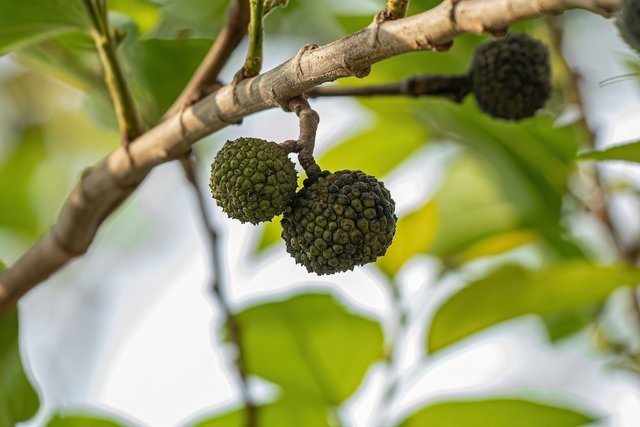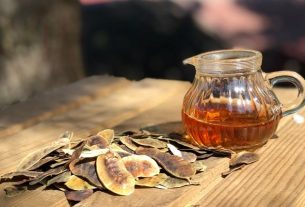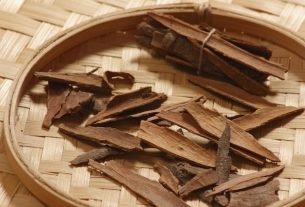Mutamba is a medicinal plant of the species Guazuma ulmifolia Popularly indicated to help treat abdominal cramps, diabetes, gastrointestinal pain and hair loss, for example.
The normally used parts of this plant are the leaves, bark and dried roots, from which substances with medicinal properties are extracted for the preparation of teas, tinctures or concentrated extracts.
Mutamba, also known as mutamba-preta, cabe-de-negro, guaxima-macho, periquiteira, chico-magro, envireira or pau-de-bicho, can be purchased at herbal pharmacies or natural product stores, and should be used with medical or herbalist advice.

What is it for
There are several popular applications for mutamba, however, some of the most scientifically proven effects include:
1. Lower blood pressure
Some substances present in Mutamba bark tea, known as flavonoids, appear to relax blood vessels, reducing systolic pressure and rapid heartbeat.
However, the acetone extract seems to have a greater effect, as it has a more specific substance that acts on the blood vessels. However, this extract should only be used under the supervision of a naturopath.
2. Reduce blood sugar levels
In Mexico, this plant is popularly used to complete the medical treatment of type 2 diabetes and, some studies also demonstrate this action by proving that mutamba tea stimulates the absorption of glucose, even in people with insulin resistance, reducing its concentration. in the blood.
3. Reduce the risk of Alzheimer’s
Tea from this plant appears to have a protective effect on neurons, protecting against oxidative damage. Thus, it is possible to reduce the risk of problems related to neuronal death, such as Alzheimer’s, for example.
4. Stimulate labor
Several studies show that mutamba tea increases uterine muscle activity and can be used as a natural labor stimulant. For this reason, this plant should only be used with guidance from an obstetrician to ensure that it is used at the correct time.
5. Relieve abdominal cramps
Tea made from mutamba bark has been shown to have activity on the smooth muscle of the intestine and bladder, causing it to relax. Therefore, this tea can be used during attacks of abdominal cramps and diarrhea as an antispasmodic, as well as in cases of urinary infection, to try to reduce discomfort.
6. Strengthen hair
Although it is less studied, mutamba may also have a protective effect on hair, preventing hair loss and promoting growth, in addition to strengthening the scalp.
However, these effects are only proven for alcoholic, methanolic or acetone extracts, which cannot be made at home and which must always be recommended by a naturopath, in correct dosages.
7. Lower cholesterol
Due to flavonoids and phenolic compounds with antioxidant action in mutamba, this plant can help lower total cholesterol, bad cholesterol (LDL) and triglycerides, thus preventing the development of heart diseases, such as heart disease and atherosclerosis, for example.
8. Fight virus or fungal infections
The leaves and bark of the mutamba trunk have antimicrobial properties that can help fight infections caused by bacteria such as E. coli, Salmonella typhi, S. pneumoniae e S. dysentery, and fungi, such as Candida albicans, C. krusei or C. tropicalis.
However, the studies carried out to date have been in vitrorequiring studies in humans to prove these benefits.
9. Reduce chemotherapy side effects
The aqueous extract of the bark of the trunk and leaves of mutamba has antioxidant properties, which can help reduce the side effects of chemotherapy with doxorubicin, reducing the toxic effects of this medication on the heart.
However, more studies are still needed to prove this benefit, and the use of mutamba must be carried out under medical supervision, so as not to interfere with the effectiveness of chemotherapy treatment.
10. Eliminate intestinal worms
In vitro studies, carried out in laboratories, showed that the decoction made with mutamba leaves has action against protozoa, such as Entamoeba histolytica it’s at Giardia lambliawhich can help treat amoebiasis or giardiasis.
How to use
The most popular way to use mutamba is to use its leaves, fruits or bark to prepare homemade teas, however, this plant can also be used in the form of a concentrated extract. In either case, the ideal is for the indication to be made by a naturopath, as well as the dose to use.
1. Mutamba tea
Mutamba tea can be easily prepared using dried bark from the trunk of the plant.
Ingredients
- 2 to 3 tablespoons of dried Mutamba peels;
- 1 liter of water.
Preparation mode
Place the dried plant peels in a pan with 1 liter of water, letting the mixture boil for another 10 minutes, over medium heat. After this time, it must be covered and left to rest for 10 to 15 minutes. Strain before drinking.
This tea can be drunk warm, 2 to 3 times a day, depending on the need and symptoms felt.
2. Mutamba fluid extract
Mutamba fluid extract can be found in health food stores, and the doses must be indicated by the doctor or herbalist according to the condition to be treated.
Possible side effects
This plant when consumed in large quantities, or without medical supervision, can cause some unpleasant side effects that can include nausea, vomiting and dysentery.
Who should not consume
As it causes contraction of the uterine muscle, this plant should not be used during pregnancy without guidance from an obstetrician.
Furthermore, mutamba should not be used by children, breastfeeding women or people who are sensitive to caffeine, as well as by those who easily experience hypoglycemia.
The fluid extract has alcohol in its composition and should not be used by those treating alcoholism or those using the medicine disulfiram.

Sign up for our newsletter and stay up to date with exclusive news
that can transform your routine!
Warning: Undefined array key "title" in /home/storelat/public_html/wp-content/plugins/link-whisper-premium/templates/frontend/related-posts.php on line 12
Warning: Undefined array key "title_tag" in /home/storelat/public_html/wp-content/plugins/link-whisper-premium/templates/frontend/related-posts.php on line 13



